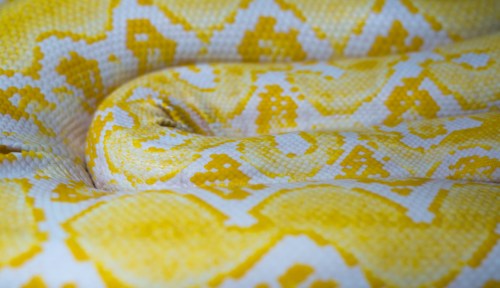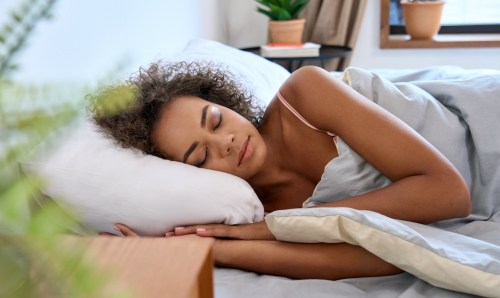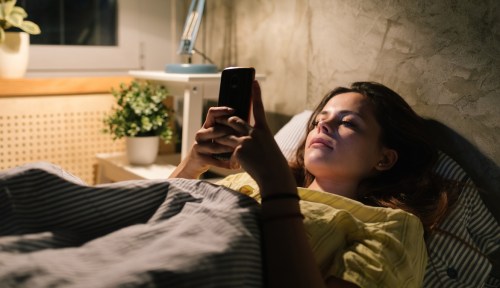The Difference Between White Noise, Pink Noise, and Brown Noise—And Which May Boost Your Memory While You Sleep
Discover the benefits of different types of white noise for sleep. Learn about different color noises and what they each do.

For all the people whose Spotify Wrapped end-of-year lists prominently feature 8-hour tracks of fans whirring, you probably already know that different types of white noise may be able to help you fall asleep—especially when compared to an otherwise empty soundscape. But while sounds like fans, falling rain, and air conditioners might colloquially be called “white noise,” are they really, scientifically considered white noise? Not necessarily, as we’ll discover. In fact, true white noise actually sounds like radio static, meaning the actual “soothing” sounds we associate with white noise machines and the like, are actually usually considered pink or brown noise.
Experts in This Article
VP of clinical research at Nanit
sleep doctor and assistant clinical professor at Keck School of Medicine of USC
neuropsychologist and founder of Comprehend the Mind
clinical psychologist, sleep specialist, author of The Women’s Guide To Overcoming Insomnia, and Director of Sleep Health at Sleepopolis
But how does white noise work, besides just being a comforting distraction? Sleep researcher Natalie Barnett, PhD, VP of clinical research at Nanit, explains that “white noise can also become a sleep association: meaning that when someone hears white noise, it’s an indication that it is time to sleep.” This is helpful, she explains, in the case where someone wakes up in the middle of the night. They can then hear the white noise, and know they need to get back to sleep. Dr. Barnett adds that “This can be particularly useful when traveling—white noise is a really easy way to recreate the home environment and make it easier to adjust to a new sleeping space.”
“White noise is a really easy way to recreate the home environment and make it easier to adjust to a new sleeping space.” —Natalie Barnett, PhD, VP of clinical research at Nanit
We spoke to experts to help discover what exactly white noise is, what the different colors and types of white noise are and sound like, applications of each color noise, and of course, what the best color noise is for sleep. Curious? Grab a pair of headphones and let’s dive in: this article has examples of the different types of white noise linked so you can hear the differences for yourself. And P.S. If you’re still wired after reading (and listening) to this walkthrough of different types of white noise and don’t want to be, we have more tips for sleep difficulties right this way as well.
What do different types of white noise do?
To be scientific, the difference between white, pink, and brown noise and even green noise has to do with the power or intensity of sound waves across different frequencies. You can envision white noise as a sound where the intensity of all the different waves across the spectrum of audible sound is equal: one constant “shh” sound that gets its sleepiness-inducing power from its sheer evenness and consistency. Though pink and brown noise similarly contain all the waves of audible sound—aka the reason why these colorful noises are collectively called “broadband” sound—the energetic power of their different frequencies diminishes with each higher octave, by three decibels for pink noise, six for brown, and increased for higher pitched sounds like blue and violent noises.
The resulting amplification of lower tones in pink and brown noise could potentially make them even more calming to hear than white noise, which could come across as a bit shrill or harsh to some (more on that below). But, it’s worth noting that when it comes to sleep, the overall benefit of white, pink, or brown noise is always going to be a product of personal preference and environment, says Raj Dasgupta, MD, FAASM, sleep expert and spokesperson for the American Academy of Sleep Medicine. “For me, I do great with the washing machine running at night, whereas someone else might prefer a white-noise machine,” he says.
One common denominator across these consistent sounds, though, is their ability to drown out any other noises that might otherwise interrupt sleep. “Broadband sound reduces the difference in volume between the noise you’re hearing as you drift off and any jarring sound, like the slamming of a door or a car driving by outside,” says Dr. Dasgupta. And by minimizing that potential change in sound, the background hum of white, pink, or brown noise could help prevent middle-of-the-night awakenings and, in turn, improve your sleep quality.
What color noise is best for sleep?
When it comes to the best types of white noise for sleep, neuropsychologist Sanam Hafeez, PhD, recommends brown noise, as this sound is deeper and more intense than pink noise. Brown noise sounds like the roar of a river or heavy rainfall, and is commonly “used for relaxation, sleep aids, and sound masking, particularly for those who prefer deeper soundscapes,” Dr. Hafeez notes. Brown noise that is consistent and even, can sound rich and soothing, which helps cover up noise disturbances such as car alarms or sirens better than the higher sounds of static of white noise.
Here’s the difference between the different types of white noise
Real quick disclaimer: it’s easy to get lost in the sauce of the many different colors of noise and types of white noise, but it’s important to note that not all the colors of white noise may be beneficial to sleep health or even worth listening to. Still, we’ve included information on these wavelengths for curiosity’s sake, and so you can get a better idea of what noises are best for sleep health. Here’s a rundown of the difference between color noises.
White noise
Generally, white noise sounds like the hiss of a radio tuned to an unused frequency. Just as white light contains all the light frequencies in the visible range, white noise contains all the sound frequencies in the audible range, creating what sleep doctors call a “sonic wall.” That essentially means that the sound is even and consistent, which can help block out external noise that might negatively impact sleep, says clinical psychologist and sleep physician Shelby Harris, PsyD.
Some research backs that up: A small 2017 study1 found that broadband sound administration reduced sleep onset latency (aka the time it takes to fall asleep) by 38 percent compared to normal environmental noise. And another small 2021 study2 showed that white noise improved sleep quality and duration in folks who lived in New York City and noted experiencing sleep disturbances due to high levels of environmental noise.
But, at the same time, a 2021 literature review of studies on white noise3 found that while it may, in some instances, reduce the amount of time it takes you to fall asleep, it doesn’t always have consistently positive effects on sleep quality and could even prevent the auditory system from fully winding down. So, essentially, if you’re not aiming to drown out jarring background noises, then a white-noise machine might not always be the sleep panacea that its reputation suggests.
Listen to ithere.
Pink noise
With pink noise, you’re getting the hum of white noise but at a less shrill tone, as the intensity of its higher-frequency sound waves is lesser than that of the lower-frequency ones. Basically: Pink noise comes across more like the whoosh of consistent rainfall or a waterfall than it does radio static. “I describe pink noise as similar to white noise but with the bass turned up,” says Dr. Dasgupta.
In comparison, there are a few more studies on pink noise than there are on white noise to support its sleep-enhancing effects—namely, its ability to reduce brain-wave complexity4 (which can bring about more stable sleep) and even increase slow-wave brain activity during sleep5. “Because certain elements of memory are dependent on spending time in this deeper, slow-wave sleep, it makes sense that pink noise could ostensibly help out with memory recall, too,” says Dr. Dasgupta. And that’s in line with the above study: Participants who were exposed to bursts of pink noise (when they were detected to have entered slow-wave sleep) performed three times better on a memory test the next morning than they did after a night of no noise.
Still, that study reflects a lab setting where the pink noise could be synced up with when each of the 13 participants drifted into deep sleep. And as a result, the link between pink noise and memory isn’t rock solid. “There’s not enough research that’s conclusive to say, ‘Listen to pink noise over white noise,’ but, that being said, if you have the option to try pink, you might as well try it out since there are a couple of these limited studies,” says Dr. Harris.
Listen to ithere.
Brown noise
If pink noise is deeper in tone and intensity than white noise, then brown noise is even a bit deeper than pink. By losing some of the volume of those mid- and high-range frequencies that are more strongly present in the other color noises, brown noise comes across more like the gentle rumble of the ocean, strong winds, or thunder than it does rainfall.
Although anecdotal evidence points to the benefit of brown noise for calm and sleep—and its deep tones may certainly create a more soothing, comfortable vibe than the sounds of its white and pink cousins—it hasn’t been rigorously studied, says Dr. Harris. “That’s why I tend to recommend anything that the person likes and is drawn to that’s a consistent noise—whether it be brown, pink, or white,” she says. “It’s also the case that any of the above are likely to be more helpful for those people who have inconsistent noises in their sleep environments that they need to mask.”
Listen to ithere.
Blue noise
Where pink and brown noise decreases by dB, blue noise is increased by three decibels per octave, Dr. Hafeez says, which makes higher frequencies (and higher-pitched noises) more prominent. As far as sound, blue noise has a higher-pitched, hiss-like sound, she explains, adding that this color noise is often used in digital audio and image processing, and not so much for sleep or calming applications.
Listen to it here.
Violet or purple noise
Violet or purple noise emphasizes even higher frequencies than blue noise, Dr. Hafeez explains, as it increases by six decibels per octave. This makes violet or purple noise even more intense, and explains why it’s mostly used in signal processing applications and not for sleepy night time noises.
Listen to it here.
Gray noise
Gray or grey noise is “designed to sound equally loud at all frequencies to the human ear, compensating for the ear’s sensitivity to different frequencies,” Dr. Hafeez explains. It’s mostly used in hearing tests and audio engineering, she adds. Gray noise is often compared to white noise, in that it is equally loud, meaning it is also consistent and even-sounding, like white noise.
Listen to it here.
Black noise
Black noise sounds like “mostly silence with occasional random noise spikes,” Dr. Hafeez explains, and is not widely used in any practical applications. Black noise can also be colloquially used to describe silence. Still, if you’re curious exactly what “mostly silence” sounds like, we’ve included a link below.
Listen to it here.
Messineo, Ludovico et al. “Broadband Sound Administration Improves Sleep Onset Latency in Healthy Subjects in a Model of Transient Insomnia.” Frontiers in neurology vol. 8 718. 21 Dec. 2017, doi:10.3389/fneur.2017.00718
↩︎Ebben, Matthew R et al. “The effects of white noise on sleep and duration in individuals living in a high noise environment in New York City.” Sleep medicine vol. 83 (2021): 256-259. doi:10.1016/j.sleep.2021.03.031
↩︎Riedy, Samantha M et al. “Noise as a sleep aid: A systematic review.” Sleep medicine reviews vol. 55 (2021): 101385. doi:10.1016/j.smrv.2020.101385
↩︎Zhou, Junhong et al. “Pink noise: effect on complexity synchronization of brain activity and sleep consolidation.” Journal of theoretical biology vol. 306 (2012): 68-72. doi:10.1016/j.jtbi.2012.04.006
↩︎Papalambros, Nelly A et al. “Acoustic Enhancement of Sleep Slow Oscillations and Concomitant Memory Improvement in Older Adults.” Frontiers in human neuroscience vol. 11 109. 8 Mar. 2017, doi:10.3389/fnhum.2017.00109
↩︎
Sign Up for Our Daily Newsletter
Get all the latest in wellness, trends, food, fitness, beauty, and more delivered right to your inbox.
Got it, you've been added to our email list.










